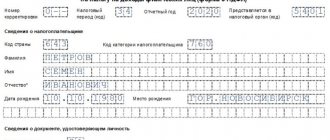Grounds for deduction of alimony
An order to withhold and transfer alimony through the company’s accounting department is sent to the employee at his main place of work. The basis may be:
- performance list;
- court order;
- alimony agreement certified by a notary;
- resolution of the bailiff.
Accountants should be aware that alimony payments should only be withheld after income taxes have been withheld. That is, they are, as it were, second in line (Part 1 of Article 99 of the Federal Law of October 2, 2007 No. 229-FZ “On Enforcement Proceedings”, hereinafter referred to as Law No. 229-FZ).
Is alimony calculated after or before personal income tax withholding?
In practice, accountants who are required by law to withhold alimony from the income received by an employee have problems calculating the required amount of payment.
With the help of this article you will find out when and in what situations alimony is withheld: before or after personal income tax.
How is the amount of alimony determined?
Alimony payments may be intended to support a close relative (disabled parent, child) or a former spouse who has become unable to work.
Their value is determined in two ways - by peaceful agreement of the parties by drawing up an agreement or by filing a claim in court.
In the first case, the parties are independently able to determine the amount of payments, the frequency of their provision, the method of transferring finances and other nuances. If the payer does not want to support a needy relative, this conflict will have to be resolved in court.
Child support payments are provided in one of the following options:
- in a fixed amount (if the payer does not have a stable salary or receives income in foreign currency);
- as a percentage of total income (for example, 25% of a person’s income is withheld to support one child).
Is alimony withheld after or before personal income tax withholding?
The payment is withheld from the profit received by a citizen obligated by agreement or court decision to financially support a relative in need.
This takes into account not only the payer’s salary, but also other types of income (for example, accrued pension). In accordance with Article 99 of Federal Law No. 229 of October 2, 2007, alimony is calculated after deducting personal income tax.
- (SD – 13% personal income tax) * RAV
- In this formula, RAV is the amount of alimony payments,
- SD – total income of the payer,
- and 13% is the income tax rate.
If alimony is withheld directly from a citizen’s salary, the calculation and accrual is handled by the accounting department at the payer’s place of official employment.
The basis for the withholding is the receipt by the accountant of the corresponding application and writ of execution from the recipient of the payments or the bailiff.
It is worth noting that the writ of execution can be a court order, a notarized agreement of the parties on the payment of alimony, or a writ of execution (it is issued after the court order enters into legal force). Without these documents, the accountant does not have the right to withhold payments from the employee’s salary.
Restrictions on withholding payments
Article 99 of Federal Law No. 229 establishes certain restrictions on amounts recovered in favor of a relative. More than half of the income he receives (wages, vacation pay and other profits) cannot be withheld from a citizen’s income.
Collections can be carried out either according to one enforcement document or several at a time.
Are payments collected from the advance payment?
The employer pays the employee wages 2 times a month. Personal income tax is withheld once during this period (the entire amount for the month of work is taken into account when calculating).
In accordance with Article 109 of the RF IC, alimony payments must be provided to interested parties on a monthly basis.
Thus, it is enough to withhold alimony once every 30 days (that is, at the end of the working month). Formally, alimony is not collected from an advance payment given to an employee in the first half of the working month.
When is alimony collected from a pension: before personal income tax is deducted or after?
Citizens with a disability group are not exempted by the legislation of the Russian Federation from the obligation to promptly provide financial support to their needy relatives (for example, minor children).
In this case, alimony payments must be withheld from temporary disability benefits and the pension received by the person.
The amount of payment is determined using a similar formula, but there is no need to subtract the amount of personal income tax. The fact is that pensions are not taxed, so the calculation algorithm is as follows.
- (SD * RAV)
At the same time, the court does not exempt the disabled citizen from alimony payments, but may reduce their amount if there are grounds for this.
When is alimony deducted from vacation pay: before or after personal income tax?
An employee who is officially employed receives annual vacation pay and the right to well-deserved vacation. Many citizens who pay alimony or receive these payments are interested in whether the required amount is withheld from this type of income?
According to the norms of family legislation of the Russian Federation, vacation pay is an official part of the earnings of an employed person. That is why alimony payments are also withheld from this type of profit.
An example of alimony withholding after personal income tax withholding
Let's look at the procedure for calculating and collecting payments in favor of a child using a specific example. If a citizen receives a salary of 30,000 rubles, the amount of the person’s “net” income is (30,000 - 13% personal income tax) = 26,100 rubles. Thus, the amount of income tax in this case is equal to 3,900 rubles.
It is from this amount of “net” earnings that alimony is calculated. The monthly payment for the maintenance of one child in this case will be (26,100 * 25%) = 6,525 rubles.
Source: https://urmozg.ru/semeynoe-pravo/alimenty-posle-ili-do-uderzhaniya-ndfl/
Deduction amounts
The writ of execution does not always indicate the specific amount of a fixed amount of alimony. Then the unfortunate spouse and his employer should know that they will have to pay:
- for one child – 25 percent of the amount of calculated earnings excluding personal income tax;
- for two children - a third of the same income according to the same calculations;
- for three or more children, you will have to share half of your income.
It should be noted that some individuals are deeply mired in paying child support. But keep in mind that Law 229-FZ contains a strict restriction: one person cannot be deducted for payments to other persons in an amount greater than 70 percent of his income minus income tax.
Calculation of personal income tax when withholding alimony from material benefits
A material benefit is the money that the person paying the tax receives as a saving on something.
Most often, material benefits occur when receiving an interest-free loan: in this case, money is saved due to unpaid interest.
Important information! The Tax Code of the Russian Federation states that alimony cannot be collected from material benefits due to the fact that this money does not exist in reality: it is “theoretical” and exists only on paper. But, when calculating the tax duty, this illusory money is taken into account, and due to it the tax payment increases.
Let's give a clear example:
A certain Petrov, in 2021, received a cash loan from the organization, and without interest. The material benefit is in percentage savings . The amount of benefit is determined at 2/3 of the refinancing rate. In Art. No. 224 of the Tax Code of the Russian Federation states that such income should be subject to a tax duty of 35% .
Do not forget that money for a child should be calculated without taking into account personal income tax for material benefits.
Quick transfer
The same Law No. 229-FZ determines the period for payment (transfer) of alimony to the other parent of the child. It is three days after the accrual of wages and other payments. That is, taking into account all bonuses, vacation pay, sick leave pay.
A profitable loophole for alimony payers is travel accruals. The fact is that, according to the law, alimony is not withheld from them, since the entire amount goes to support the posted worker. In different years, the amounts of travel allowances were different. Sometimes their size was significant when the employee was sent on long business trips.
Employees are given a pay slip, which clearly states (Article 136 of the Labor Code of the Russian Federation):
- the amount of calculated and transferred alimony;
- income tax;
- the balance of the amount received by the alimony holder.
The procedure for withholding income in favor of alimony
The wages of the alimony obligee are credited in five stages:
- Determination of an employee’s monthly earnings, including bonuses and allowances.
- All taxes, including income taxes, are subtracted from the data obtained in the first paragraph.
- From the remaining funds, alimony obligations are deducted, the amount of which is described in the writ of execution.
- Alimony is transferred in the manner specified in the court decision or agreement between the parties.
- The remaining funds are paid to the employee as salary.
The employer undertakes to transfer the required alimony payments to the recipient no later than three days from the moment the alimony-obliged person receives a salary or other income.
Amount of obligations to support a minor
If the writ of execution does not indicate the amount to be recovered from the parent’s income, then the total amount is calculated as follows:
- 25% of income is collected if the payer has one child;
- 33% of income is withdrawn if there are two children;
- 50% of the salary goes as alimony if there are three or more minor children.
Important! The total amount of alimony payments should not exceed 70% of income after deducting personal income tax.
What income is not taken into account when calculating the amount of liabilities?
The following types of income of citizens are not subject to alimony deductions:
- travel allowances designed to compensate the employee’s expenses;
- compensation benefits paid upon dismissal due to staff reduction or liquidation of an organization;
- funds allocated to pay for food for citizens working in hazardous conditions;
- one-time financial assistance from government agencies or an employer aimed at treatment or compensation for lost housing;
- incentives on the occasion of marriage, birth of children or funerals.
Important! All of the above items of income are subject to taxation, but are not subject to claim as alimony.
Alimony for 1st child
Parent Kovalenko V.P. pays child support for one child. In May, he received a salary with all additional payments in the amount of 36 thousand rubles. According to the law, 25 percent of income must be withheld from each child.
Income tax for 36 thousand is 4680 rubles. (36,000 x 13:100).
The amount that remains after paying personal income tax: 36,000 – 4680 = 31,320 rubles. This is the indicator from which the amount of alimony is calculated.
In our case, child support for one child will be: 31,320 x 25:100 = 7,830 rubles. This amount will be transferred to the other parent within 3 days for the maintenance of their son or daughter.
Kovalenko V.P. will receive a salary minus income tax, alimony, other deductions for social and pension insurance, and union dues. If we do not take into account other deductions, the amount in hand will be:
36,000 – 4680 – 7830 = 23,490 rubles.
Alimony payments are deductible before or after income taxes
For people with a stable income, the amount of payments is strictly fixed by family law:
- For one child, 25 percent of the parent's salary is withheld.
- For two children - a third of the income.
- Three or more – half the income.
The court a priori believes that wages cannot be less than the minimum wage (for 2021 this is 7,800 rubles). Family law does not regulate the situation in which a parent receives less than the minimum wage. There are two options for the development of events:
- The court will set a fixed alimony payment.
- The court will decide to calculate interest not from the official salary of the parent, but from the minimum wage amount. In this case, personal income tax is not taken into account. Payments are calculated immediately from the “body” of the minimum wage.
A fixed alimony payment is also established for citizens who do not have a permanent source of income.
This method of alimony payments is also used by those who are unofficially employed. True, if the plaintiff manages to prove this, then in addition to alimony, the defendant will have to pay a large fine and, if the period of tax evasion seems critical to the court, even receive criminal punishment.
Child support has a number of pitfalls that you should be aware of before the hearing:
- Child support is paid in full even by the parent who has lost parental rights or abandoned the minor. At the same time, he does not have the right to demand payments from the child for his maintenance in the future.
- If child support was paid in a fixed amount, and income increased sharply, then the other parent can file a claim and the amount of payments will be increased.
- There is no need to worry about whether tax is withheld from alimony payments, even if the payments are in a fixed amount. The answer is no.
- Child support is paid until the child reaches the age of majority, and alimony for an adult until the urgent need for it ceases.
- The percentage of payments is tied to wages, so payments will increase along with wages.
- In the event of a settlement agreement, alimony is also paid without taking into account personal income tax, since the defendant pays it independently and within the terms agreed upon with the former spouse, and not according to the procedure established by the court.
One child
In our case, with a salary of 36,000 rubles while supporting one child, income tax is taken not from the indicated amount, but from the amount:
36,000 – 1400 = 34,600 rub.
The tax from this amount will be equal to 4498 rubles. (34,600 x 13:100), and not 4,680 rubles without taking into account the deduction.
Then alimony will be calculated based on the amount of 31,502 rubles. (36,000 – 4498).
The amount of alimony is 7875.50 rubles. (31,502 x 25:100).
The employee will receive: 36,000 – 4498 – 7875.50 = 23,626.50 rubles.
Let's compare the amounts received by the worker in different cases: 23,490 and 23,626.50 rubles.
The difference with the tax deduction refund is only 136.50 rubles. (23,626.50 – 23,490).
Thus, with a tax deduction, a person will receive 136.50 rubles more than without its use.
For 2 children
Income tax is calculated from the amount: 36,000 – 1,400 x 2 = 33,200 rubles.
Personal income tax is taken from this amount and amounts to: 33,200 x 13: 100 = 4,316 rubles.
In the first case, excluding tax deductions, the amount of alimony was 10,440 rubles. In our case, this is: 36,000 – 4316 = 31,684 rubles. A third is taken from this amount. Then the alimony will be:
31,684: 3 = 10,561.3 rub.
The employee will receive: 36,000 – 4316 – 10,561.3 = 21,122.7 rubles.
The difference with and without the deduction is: 21,122.7 – 20,880 = 242.7 rubles.
How are children's compensation paid if there is a personal income tax deduction for children?
For employees of enterprises (companies) with minor children or dependents (who are no more than 24 years old), the Tax Code provides for a monthly tax discount for them on income tax, and it depends on the number of children:
- if you have one or two children, tax compensation for each of them will be 1,400 rubles;
- The state payment for the third child and subsequent children, as well as disabled people, will be 3,000 rubles.
The main argument for obtaining a tax deduction for income tax is the condition according to which the children of the alimony payer will be provided for. That is, child payments must be made regularly, and they must be carried out in full.
It should be noted that receiving a tax deduction increases the income of the child support payer, and, accordingly, the amount of deductions for the child.
Calculation of tax deduction for 3 children
36,000 – (1400 x 2 + 3000) = 30,200 rub.
The tax will be: 30,200 x 13: 100 = 3,926 rubles.
36,000 – 3926 = 32,074 rubles.
Of the amount 32,074 rubles. 50% is taken:
32,074 x 50: 100 = 16,037 rubles. This is alimony.
The employee will receive: 36,000 – 3926 – 16,037 = 16,037 rubles.
The difference will be 377 rubles. (16,037 –15,660).
These amounts are insignificant, which is why many people simply ignore taking standard deductions for their children.
Read also
29.06.2016








